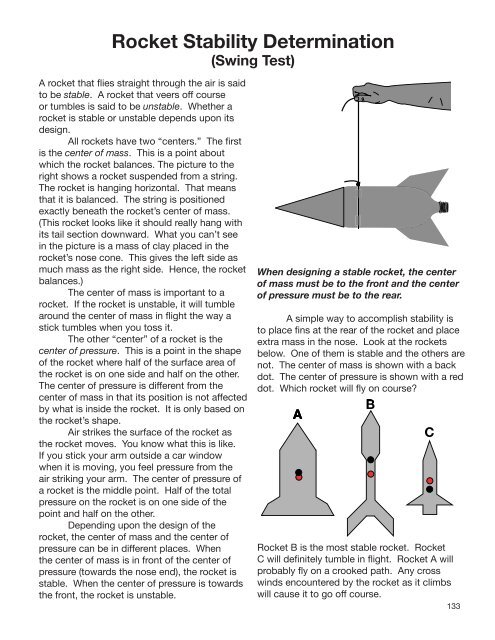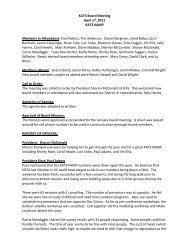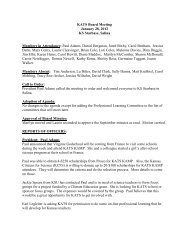You also want an ePaper? Increase the reach of your titles
YUMPU automatically turns print PDFs into web optimized ePapers that Google loves.
Rocket Stability Determination<br />
(Swing Test)<br />
A <strong>rocket</strong> that flies straight through the air is said<br />
to be stable. A <strong>rocket</strong> that veers off course<br />
or tumbles is said to be unstable. Whether a<br />
<strong>rocket</strong> is stable or unstable depends upon its<br />
design.<br />
All <strong>rocket</strong>s have two “centers.” The first<br />
is the center of mass. This is a point about<br />
which the <strong>rocket</strong> balances. The picture to the<br />
right shows a <strong>rocket</strong> suspended from a string.<br />
The <strong>rocket</strong> is hanging horizontal. That means<br />
that it is balanced. The string is positioned<br />
exactly beneath the <strong>rocket</strong>’s center of mass.<br />
(This <strong>rocket</strong> looks like it should really hang with<br />
its tail section downward. What you can’t see<br />
in the picture is a mass of clay placed in the<br />
<strong>rocket</strong>’s nose cone. This gives the left side as<br />
much mass as the right side. Hence, the <strong>rocket</strong><br />
balances.)<br />
The center of mass is important to a<br />
<strong>rocket</strong>. If the <strong>rocket</strong> is unstable, it will tumble<br />
around the center of mass in flight the way a<br />
stick tumbles when you toss it.<br />
The other “center” of a <strong>rocket</strong> is the<br />
center of pressure. This is a point in the shape<br />
of the <strong>rocket</strong> where half of the surface area of<br />
the <strong>rocket</strong> is on one side and half on the other.<br />
The center of pressure is different from the<br />
center of mass in that its position is not affected<br />
by what is inside the <strong>rocket</strong>. It is only based on<br />
the <strong>rocket</strong>’s shape.<br />
Air strikes the surface of the <strong>rocket</strong> as<br />
the <strong>rocket</strong> moves. You know what this is like.<br />
If you stick your arm outside a car window<br />
when it is moving, you feel pressure from the<br />
air striking your arm. The center of pressure of<br />
a <strong>rocket</strong> is the middle point. Half of the total<br />
pressure on the <strong>rocket</strong> is on one side of the<br />
point and half on the other.<br />
Depending upon the design of the<br />
<strong>rocket</strong>, the center of mass and the center of<br />
pressure can be in different places. When<br />
the center of mass is in front of the center of<br />
pressure (towards the nose end), the <strong>rocket</strong> is<br />
stable. When the center of pressure is towards<br />
the front, the <strong>rocket</strong> is unstable.<br />
When designing a stable <strong>rocket</strong>, the center<br />
of mass must be to the front and the center<br />
of pressure must be to the rear.<br />
A simple way to accomplish stability is<br />
to place fins at the rear of the <strong>rocket</strong> and place<br />
extra mass in the nose. Look at the <strong>rocket</strong>s<br />
below. One of them is stable and the others are<br />
not. The center of mass is shown with a back<br />
dot. The center of pressure is shown with a red<br />
dot. Which <strong>rocket</strong> will fly on course?<br />
Rocket B is the most stable <strong>rocket</strong>. Rocket<br />
C will definitely tumble in flight. Rocket A will<br />
probably fly on a crooked path. Any cross<br />
winds encountered by the <strong>rocket</strong> as it climbs<br />
will cause it to go off course.<br />
133










